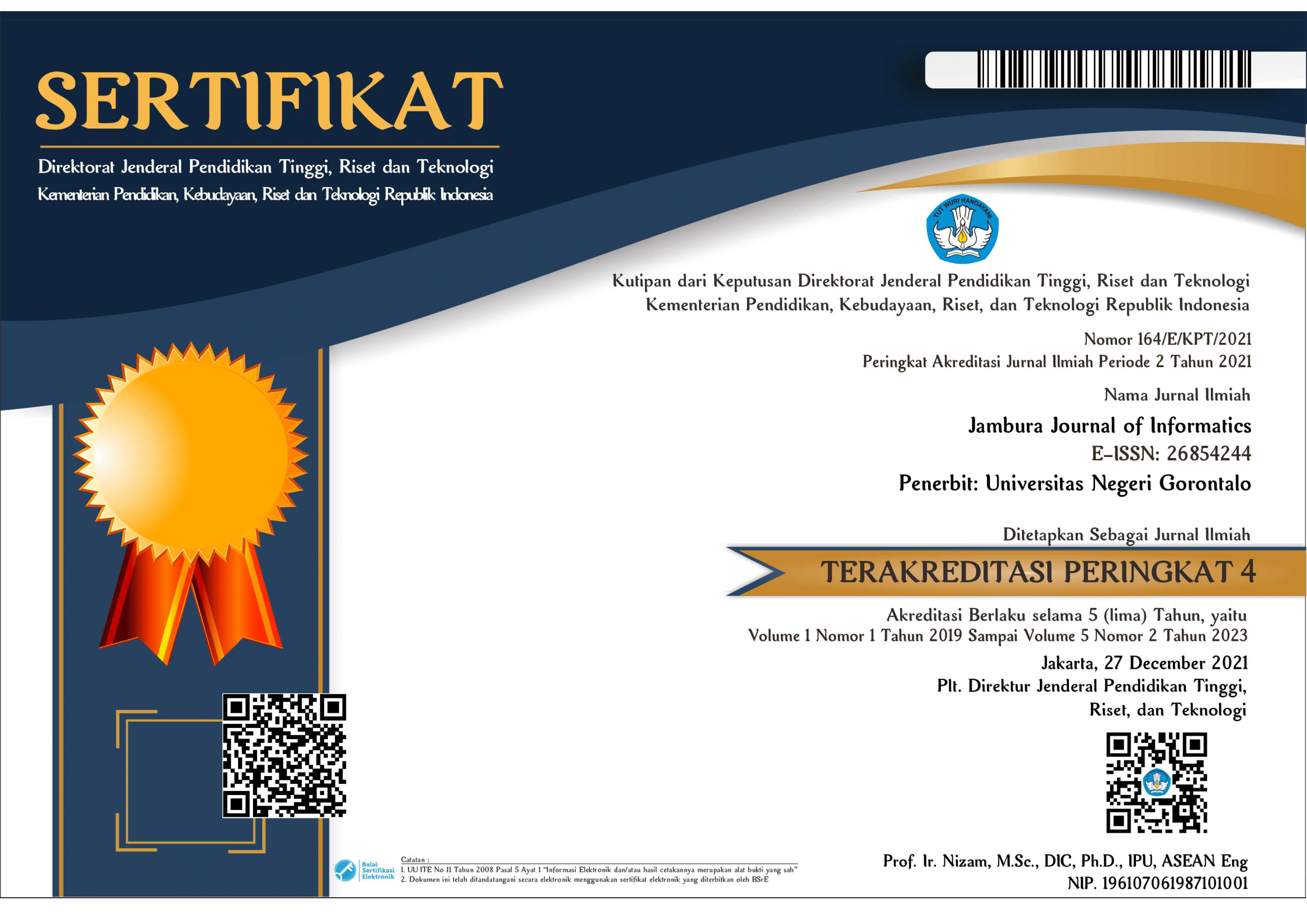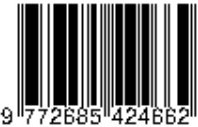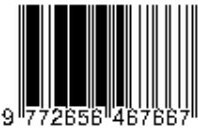Motion Graphic Animation Video as Alternative Learning Media
Abstract
Keywords
Full Text:
PDF (English)References
Adnan, F., Prasetyo, B., & Nuriman. (2017). Usabil¬ity testing analysis on the Bana Game as education game design references on Junior High School. Jurnal Pendidikan IPA Indonesia, 6(1), 88-94.
Arikunto, S & Cepi, S. A. J. (2009). Evaluasi program pendidikan. Jakarta: Bumi Aksara.
Borg, W.R., Gall M.D. & Gall. J.P. (2007). Educational research: an introduction. 8th edition. United States: Pearson.
Briggs, L. J. (1977). Instructional design, educational technology publications Inc. New Jersey: Englewood Cliffs.
Curran, S. (2001). Motion graphics: graphics design for broadcast and film. UK: Rockport.
Eady, M. J. (2013). Tools for learning: technology and teaching strategies. Learning to teach in primary school. Queensland University of Technology, Australia.
Gambari, A. I., Falode, C. O., & Adegbenro, D. A. (2014). Effectiveness of computer animation and geometrical instructional model on mathematics achievement and retention among Junior Secondary School students. European Journal of Science and Mathematics Education. 2(2), 127-146.
Gerlach, V. S. (1980). Teaching & media: a systematic approach. Second Edition, Englewood Cliffs, N.J.: Prentice-Hall.
Hwang, I., Tam, M., Lam, S. L., & Lam, P. (2012). Review of the use of animation as a supplementary learning material of physiology content in four academic years. Electronic Journal of e-Learning. 10 (4), 368-377.
Islam, M. B., Ahmed, A., Islam, M. K., & Shamsuddin, A. K. (2014). Child education through animation: an experimental study. International Journal of Computer Graphics & Animation (IJCGA), 4(4), 43-52.
Mukminan. (2015). Desain pembelajaran. Yogyakarta: Program Pascasarjana Universitas Negeri Yogyakarta.
Ntobuo, N. E., Arbie, A., & Amali, L. N. (2018). The development of gravity comic learning media based on Gorontalo culture. Jurnal Pendidikan IPA Indonesia, 7(2), 246-251.
Pinter, R., Radosav D., & Cisar, S.M. (2012). Analyzing the impact of using interactive animations in teaching. Int. J. of Computers, Communications & Control, 7(1), 147-162.
Purwanti, A. & Haryanto. (2015). Pengembangan motion graphic pembelajaran mata pelajaran Pendidikan Kewarganegaraan, kelas I sekolah dasar. Jurnal Inovasi Teknologi Pendidikan, 2(2), 190-200.
Riyana, C. (2015). The Development of three dimensional animation film for character education media in elementary school. Edutech Journal. 14(2), 1-10.
Shabiralyani, G., Hasan, K. S., Hamad, N., & Iqbal, N. (2015). Impact of visual aids in enhancing the learning process case research: District Dera Ghazi Khan. Journal of Education and Practice, 6(19), 226-233.
Subakti, Y. R. (2010). Paradigma pembelajaran sejarah berbasis konstruktivisme. SPPS, 24(1), 1-23.
Sutisna, N. (2016). Perbandingan menggunakan media kartu gambar dan animasi dalam meningkatkan pengetahuan metamorphosis hewan pada anak tunarungu. Edutech Journal. 15(1), 1-10.
Yu, L. (2008). Typography in film title sequence design. Graduate theses and dissertations. Iowa State University.
Wiana, W. (2017). The effectiveness of using interactive multimedia in improving. The concept of fashion design and its application in the making of digital fashion design. IOP Conf. Series: Materials Science and Engineering, 1-7.
Zess, N. (2018). Perancangan media pembelajaran video animasi motion graphic pada mata pelajaran Sejarah Indonesia. Gorontalo: Universitas Negeri Gorontalo.
DOI: https://doi.org/10.37905/jji.v2i1.4640
Refbacks
- There are currently no refbacks.
JJIhas been indexed by:

|

|

|

|

|

|

|

|

|
| Editorial Office |
|
Engineering Faculty Building, 1st Floor Jl. Prof. Dr. Ing. B. J. Habibie, Bone Bolango, Gorontalo, 96119, Indonesia. Whatsapp: +6281314270499 Email: [email protected] |

|
|
|













